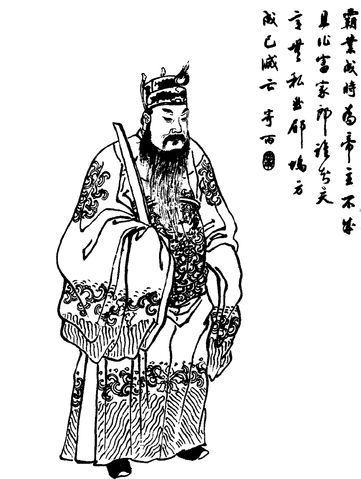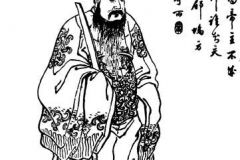There is no historical record of any engagement taking place at Tiger Trap Pass during this period and Si River Pass does not exist. The Hou Hanshu records a battle that the warlord Sun Jian had with Dong Zhou’s forces in the mountainous area south-east of Luoyang. Luo Gaunzhong and later authors probably confused the battle with the historical Hulao Pass that guarded the Eastern approach to Luoyang along the Yellow River and was a common attack vector of later invaders of China in their time.
Dong Zhuo’s biography in the Hou Hanshu stated that Lu Bu was defeated in battle twice by Sun Jian. The first time was at Yangren when Dong Zhuo sent Lu Bu and Hu Zhen to attack Sun Jian. Lu Bu and Hu Zhen could not get along with each other, leading to disorder in their army, so Sun Jian used the opportunity to attack them and forced them to retreat. The second time was in Luoyang, where Dong Zhuo personally led an army to engage Sun Jian’s forces in the area where the tombs of the Han emperors were located (Yanshi, east of Luoyang but west of the Hulao Pass)(Shi 2008). Dong Zhuo was again defeated and he retreated. Sun Jian then entered Luoyang’s Xuanyang Gate, where he attacked Lu Bu and drove him back (Fan c. 400, vol. 72)(Sima c. 94 BC, vol. 60).
The position of River Si Pass (Sishui River) is the same as Hulao Pass, which translates to Tiger Cage or Tiger Trap Pass. As an important mountain pass northwest of Xingyang, it is the site of many historical battles, being the eastern guard for the capital Luoyang for several dynasties. With Mount Song to the south, the Yellow River to the north, and the Sishui River to the west, the pass holds up a formidable defense. Many defensive structures have been set up here throughout history, dating from the Warring States period when a checkpoint was established. The pass became heavily fortified in the Tang Dynasty.
The pass is referred to as two separate places within the novel, but in reality it is one place with multiple stages of defensive works where a commander would have several options in positioning his forces. The Sishui River is a small tributary south of the Yellow River leading up to the mountainous area west, and Hua Xiong decided to position his force forward of the Pass (east) to contest Sun Jian’s crossing of the Sishui River. That is one theory that follows the story’s narrative closely.
A second theory is based on the historical records from Sun Jian’s biography in the Sanguozhi, which states that he defeated Hua Xiong at Yangren (believed to be near present-day Wenquan, Ruzhou, Henan) in the mountains south of Luoyang. This battle is mentioned in the Hou Hanshu. Sun Jian’s camp was stated to be at Liangdong, which is operational closer to the southern approach to Luoyang following the Ruhe and Yihe Rivers to Yangren than it was to the eastern approach to Luoyang through the Hulao Pass.
The second clue is from the story: the Confederation leaders state if Dong Zhuo’s forces take Tiger Trap Pass (Hulao Pass), then their forces would be cut in two (Sun Jian south of Luoyang and their force positioned northeast of Luoyang). The third clue is also from the story: Dong Zhuo positioned Li Jue and Guo Si at Si River Pass as a reserve force to the fighting at Tiger Trap Pass (i.e. to guard against Sun Jian making a renewed offense there). Unfortunately, there is no Si River south of Luoyang, but there is the Sishui River east of the Hulao Pass. Although, the Confederate forces would have to take it first before moving on Hulao, so operationally the story has it reversed.
Later editions of the story might have confused a southern and northeastern pincer movement on the capital by the Confederation with places names near Hulao Pass—the “Si River Pass” is the battle of Yangren and Tiger Trap is the battle of Hulao Pass that could be confused for the second battle outside of Luoyang at Yanshi mentioned in the Hou Hanshu.
Sources:
Fan Ye, et al (c. 450). Hou Hanshu “Book of the Later Han”, a.k.a. “History of the Later Han”.
Shi Jiazhen (2008). “Imperial Tombs of Eastern Han Dynasty at Yanshi City and the Mausoleum in Mangshan in Luoyang City of Henan,” Apr. 2008. Excavated by the Second Luoyang Municipal Archaeological Team; excavation team leader: Shi Jiazhen. Accessed Jan. 2020 – https://en.chinaculture.org/library/2008-04/18/content_130227.htm
Sima Qian (c. 94 BC). Shiji “Records of the Grand Historian”.



